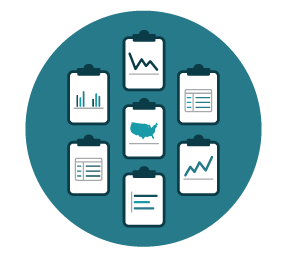Percent of adults with fair or poor health status
Measure Overview
Health status can serve as an important barometer for understanding the overall well-being of our communities as well as assist public health officials in identifying areas experiencing worsened health statuses indicating a need for intervention.
State Health Compare provides state-level rates of adults who report being in fair or poor health. These estimates can be broken down by education level and by four race/ethnicity groups (African American/Black, Hispanic/Latino, White, and Other/Multiple Races).
The data for this measure are sourced from the American Community Survey (ACS) and Current Population Survey (CPS). As SHADAC and other organizations have documented, the COVID-19 pandemic was the cause of several substantial disruptions to data collection efforts (i.e., non-response bias) for the 2020 ACS and CPS (2019 data), among other impacts. Preliminary results show that the 2021 CPS (2020 data) was also affected by the pandemic, but perhaps not to the same degree. Users are cautioned by the U.S. Census Bureau to treat these estimates with care.
Generate customized graphics using this data by selecting one of the options below.
Related Products

CPS ASEC: 2023 National Health Insurance Coverage Estimates Remain Steady for Adults but Rise for Children
Overall, data from the “Health Insurance Coverage in the United States” report highlights good news for 2023: the share of the total population without health insurance coverage remained statistically unchanged from 2022 at 8.0%, representing 26.4 million people. Nonelderly adults (age 19-64) similarly did not see any statistically significant change in their uninsurance rate from 2022 (10.8%) to 2023 (10.9%).
